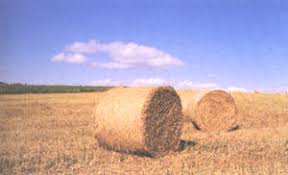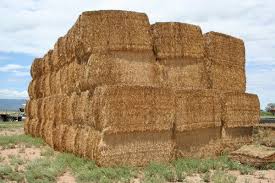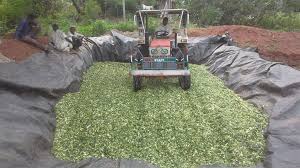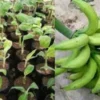Forage conservation is an essential pasture management technique in Nigeria. Excess forage is conserved during periods of abundance to be used during periods of scarcity.
To avoid excessive spending on expensive concentrate feeds, farmers harvest forages during peak growth periods and preserve them in the form of hay, silage, or stacks.
Although the quality of these conserved forages can vary, they are reliable methods used in the Nigerian livestock industry to address feed scarcity.
Read Also: 12 Medicinal Health Benefits of Oats (Avena Sativa)
Hay as a Forage Conservation Method

Hay is dry forage formed after wilting, sun-drying, turning, and packaging the dry forage material. The packaging process can be done using a baling machine or manually by hand. Hay is the most common method of forage conservation in Nigeria. It offers the following advantages over silage:
- It is easier and faster to make compared to silage.
- It has a high dry matter content.
- It requires less labor than silage.
- It is cheaper than silage.
- It can be made anywhere, provided the farmer is experienced.
- It provides bulk in the rumen, aiding rumen micro-organisms.
Silage as a Forage Conservation Method
Silage is fermented forage used to supplement livestock either throughout the year or during periods of feed scarcity. It requires high technical manpower and is more expensive than hay, particularly on intensively managed farms. However, silage offers the following advantages:
- It is more qualitative than hay.
- It is more acceptable to livestock than hay, provided it is well-prepared.
- It is independent of weather conditions.
- It can be integrated with other farm operations such as mowing and grazing.
- It can suppress weed seeds.
- It is easily degraded by rumen microbes.
Read Also: 12 Medicinal Health Benefits of Emilia Sonchifolia (lilac tasselflower)
Stacked Hay as a Forage Conservation Method

Stacked hay refers to dry forage prepared by reducing moisture content while the forage is still in the field. The key difference between stacked hay and regular hay is that stacked hay is typically kept for temporary use, whereas hay can be stored for years without spoiling.
This method is commonly seen in rural areas where farmers store hay from crops such as cowpea and groundnut haulms. Stacked hay is often found on top of trees, rooftops, and along roads in villages. It offers the following advantages:
- It is most suitable for smallholder livestock enterprises in Nigeria.
- It requires minimal labor to prepare.
- It requires less space than hay and silage.
- It provides livestock with the energy and protein required during critical periods.
- It is free from the risk of fire outbreaks that could devastate the livestock industry.
In this article, it has been explained that pastures in Nigeria can be conserved in three forms: hay, silage, and stacked hay. Each method has its advantages over the others. However, stacked hay is the most common method of forage conservation in Nigeria, particularly because the majority of farmers are smallholders.
Do you have any questions, suggestions, or contributions? If so, please feel free to use the comment box below to share your thoughts. We also encourage you to kindly share this information with others who might benefit from it. Since we can’t reach everyone at once, we truly appreciate your help in spreading the word. Thank you so much for your support and for sharing!






